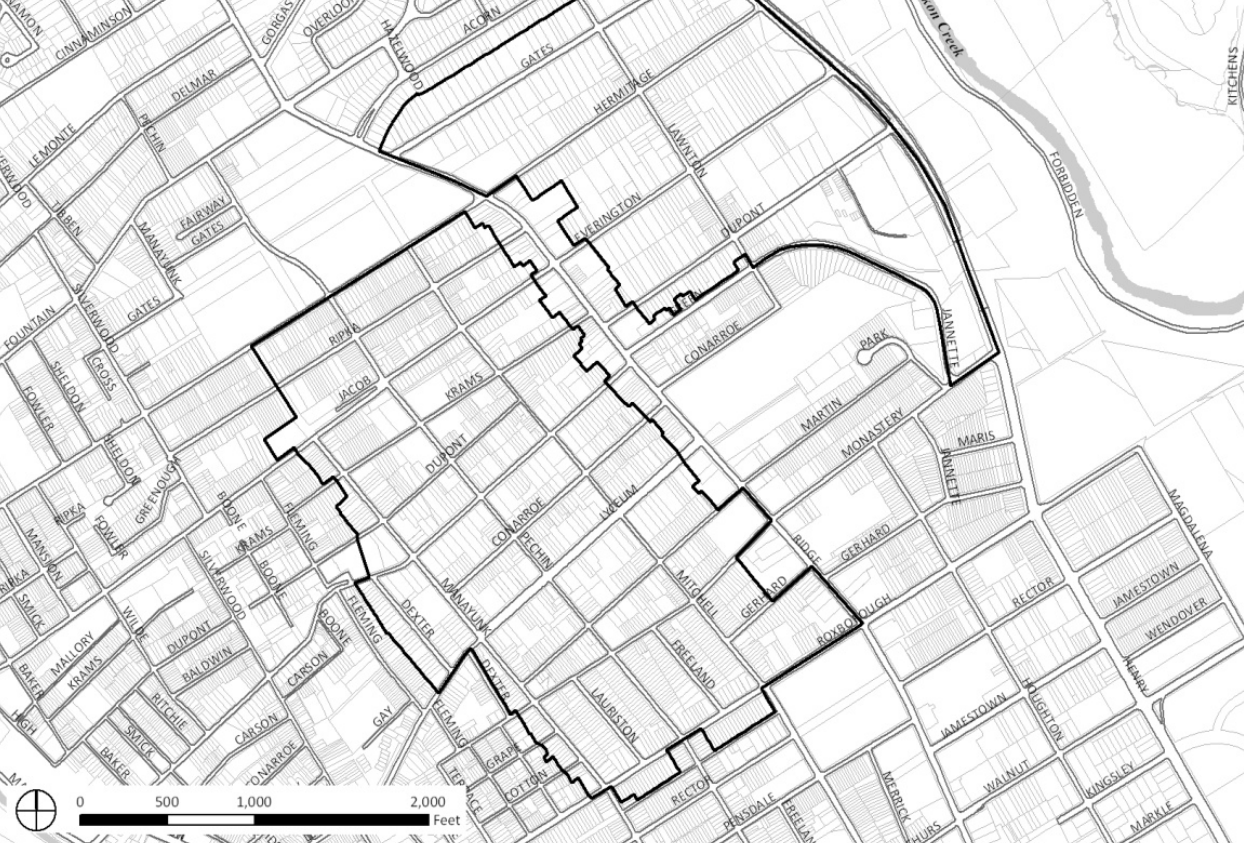Planning Commission hears about Central Roxborough conservation district

On Tuesday, the Philadelphia City Planning Commission approved the creation of the Central Roxborough Neighborhood Conservation Overlay, just the second neighborhood in Philadelphia to have regulations protecting its small-town character. The ordinance (Bill No. 14086400.pdf), introduced by Fourth District Councilman Curtis Jones Jr., will be presented to the City Council Rules Committee on Dec. 2.
The effort to create an NCO in Roxborough was sparked by the demolition in Dec. 2012 of the Bunting House, a handsome, late 19th-century stone house on the 5900 block of Ridge Ave.
A group of Roxborough residents, who had been opposed to the razing of the Victorian structure for a planned fast-food restaurant, asked the Planning Commission what could be done in order to have more control over redevelopment in the community.
Lower Northwest Planning Commission staffer Matt Wysong described the one-year collaboration between the commission, the Central Roxborogh Civic Association and the councilman’s staff. Wysong said the bill is complementary to a corrective rezoning bill that was enacted to prohibit the demolition of large lot homes.
The Central Roxborough/NCO applies to properties in the area generally bounded by Gates Street (both sides), Ridge Avenue, Hermitage Street, Manayunk Avenue (both sides), Green Lane (both sides), Dexter Street (both sides), Lyceum Avenue, Manayunk Avenue (both sides), Roxborough Avenue (both sides), Ridge Avenue, Dupont Street (both sides), Lawnton Street, Green Lane, Jannette Street, Monastery Avenue, and Henry Avenue, except for the parcels located in the Ridge Avenue/NCA.
According to the bill, the Central Roxborough/NCO Overlay intends to protect the existing walkable character of the frontages in the Central Roxborough section of Philadelphia. Walkability serves the health, safety, and general welfare of the citizens by providing human-scaled design, interesting and pedestrian friendly facades, and “eyes on the street,” all in close proximity to useful commercial destinations, parks, and transit.
These blocks and streets were selected for their relatively intact historic pattern. The design of new buildings should be consistent with the character-defining features of this overlay district, in terms of massing, vertical and horizontal articulation, fenestration proportions, and building materials.
The only other NCO in the city was created for Queen Village.
Watch the video of the PCPC presentation below.
WHYY is your source for fact-based, in-depth journalism and information. As a nonprofit organization, we rely on financial support from readers like you. Please give today.



